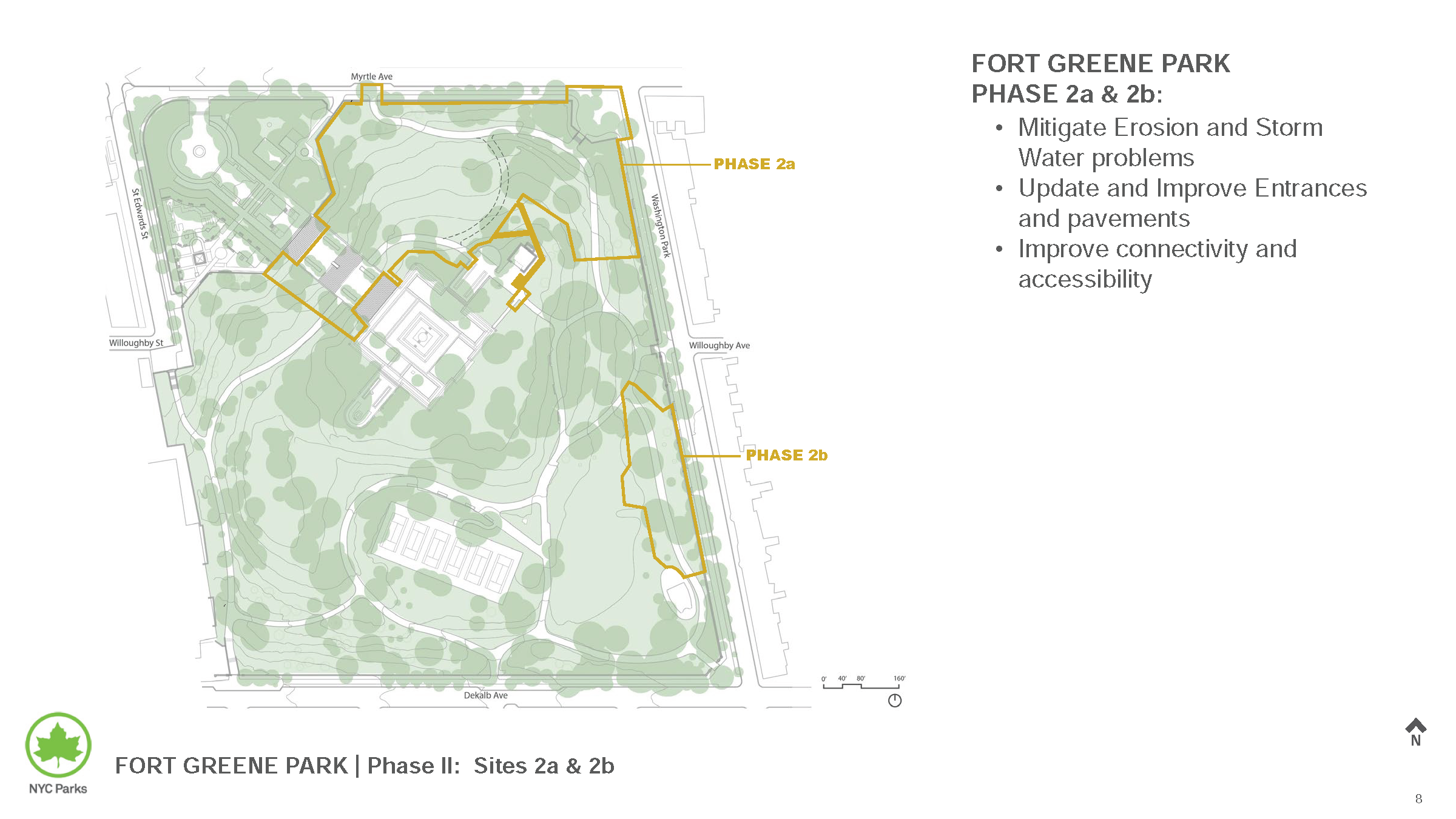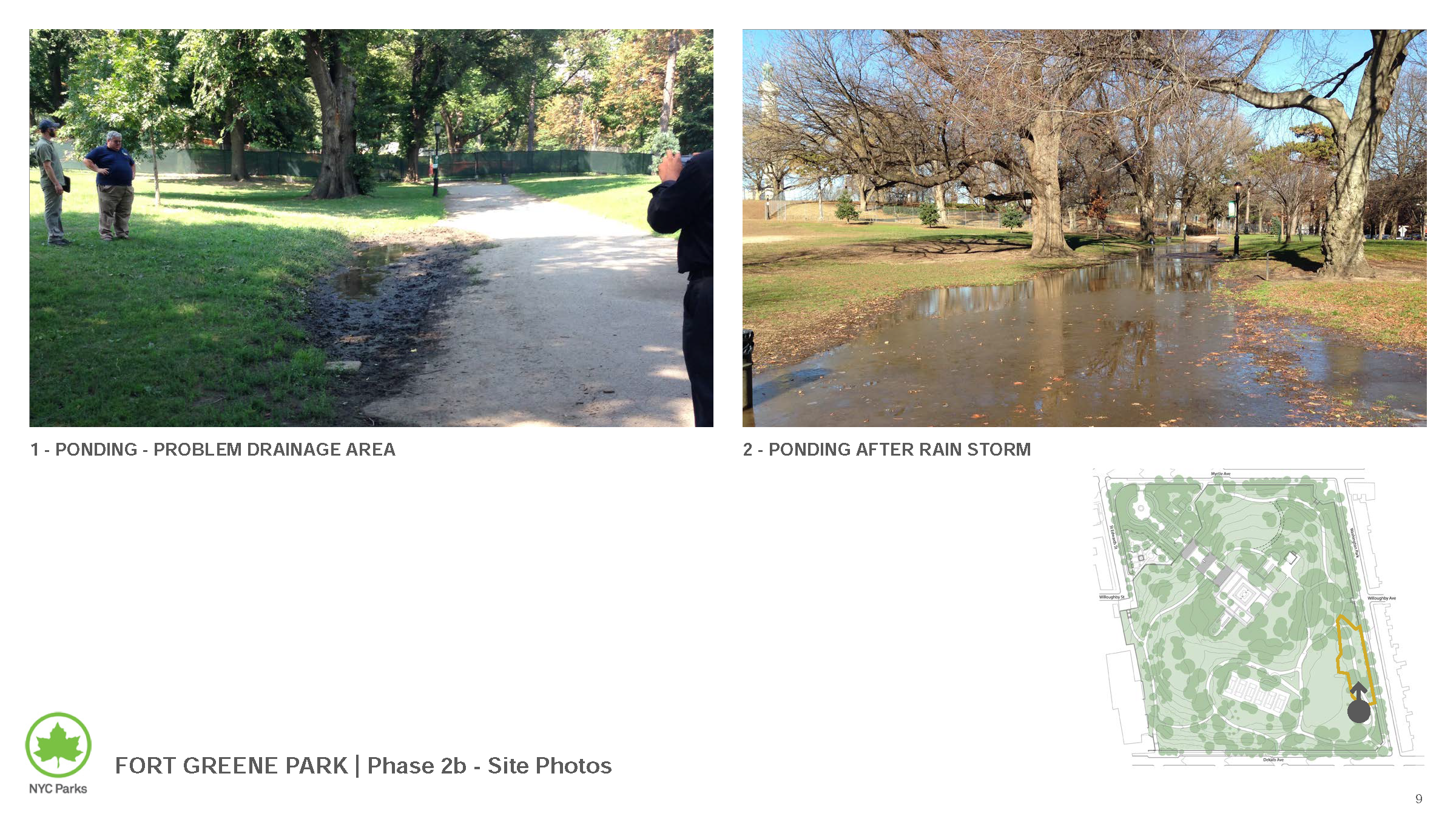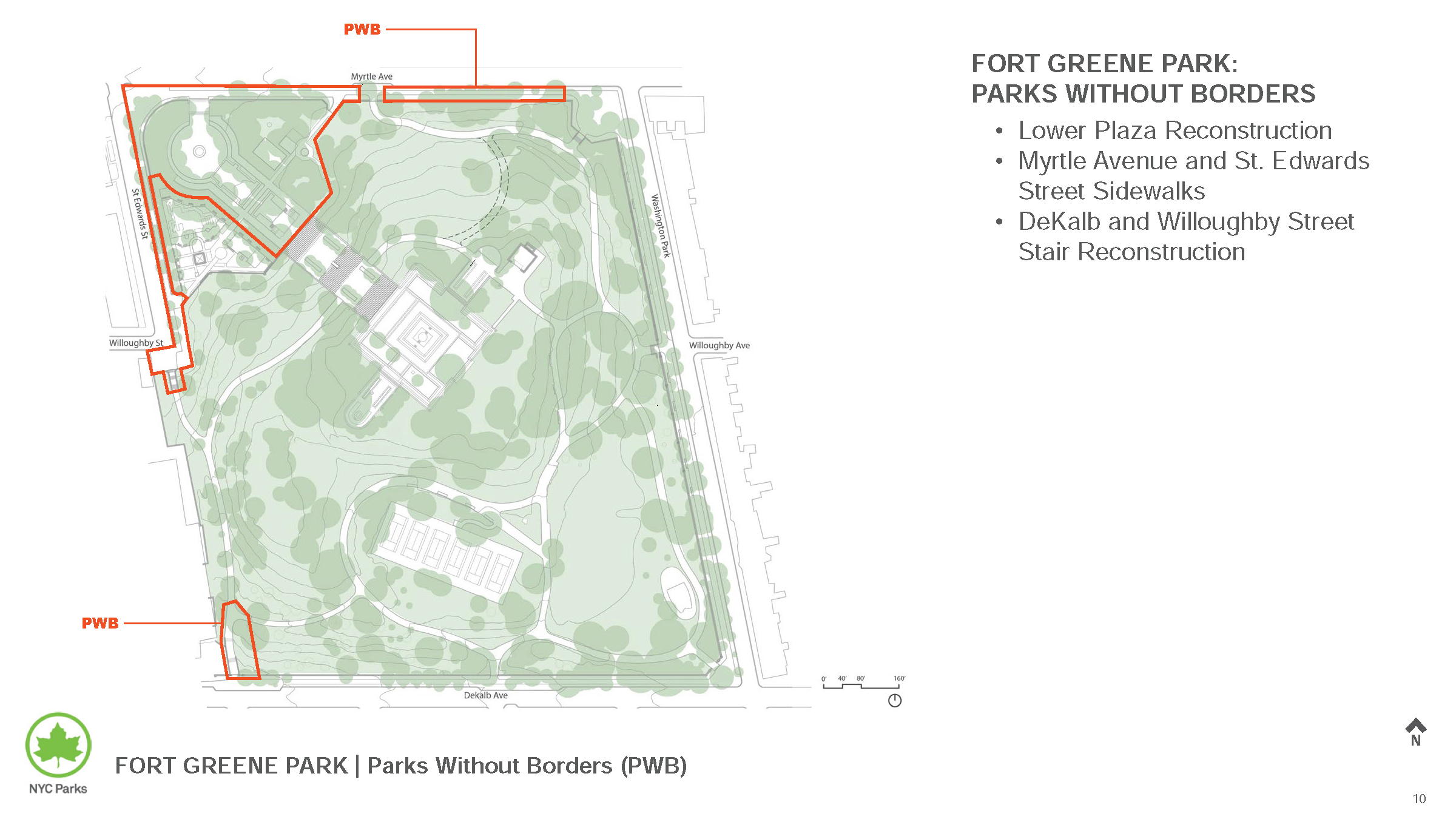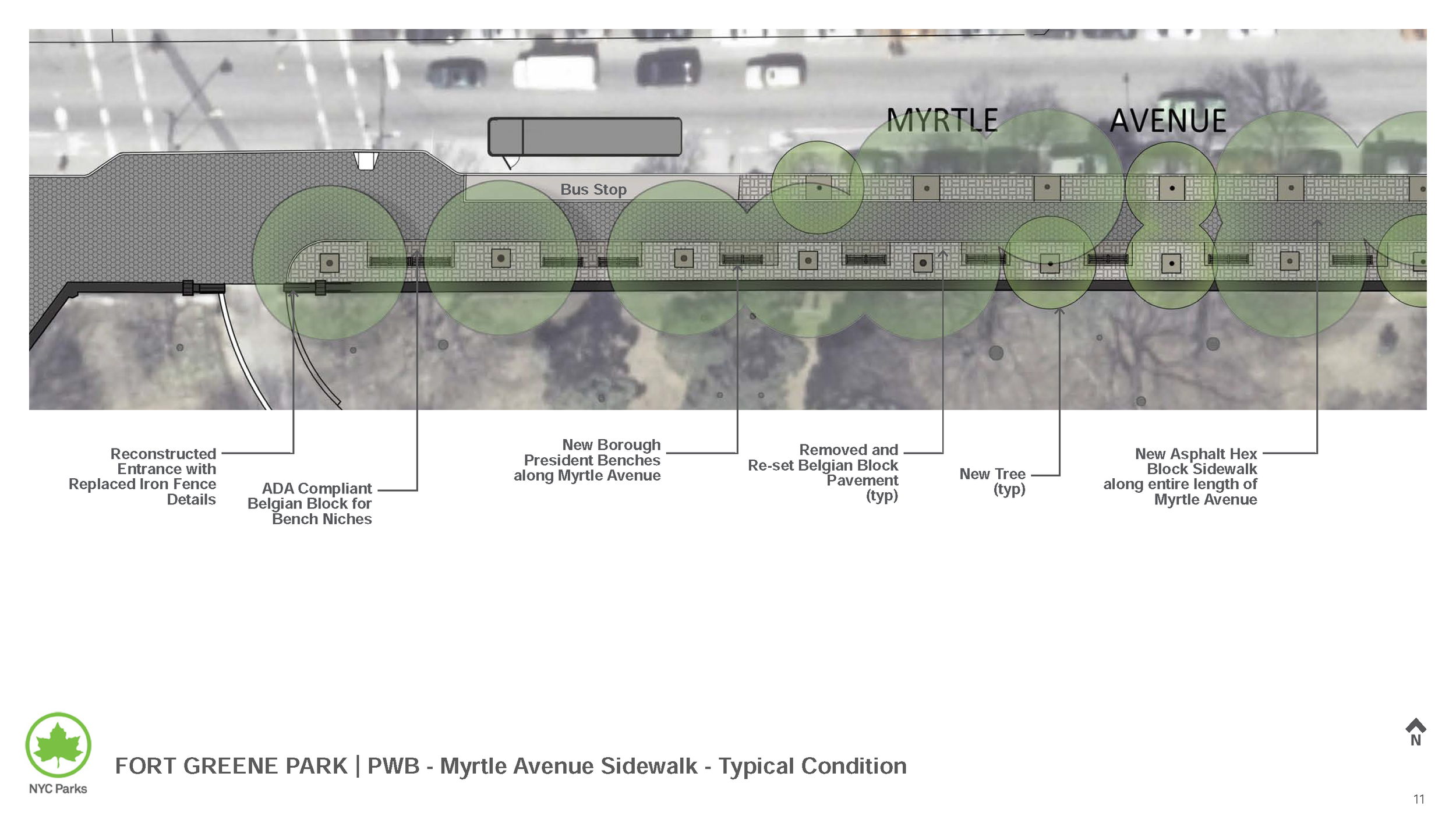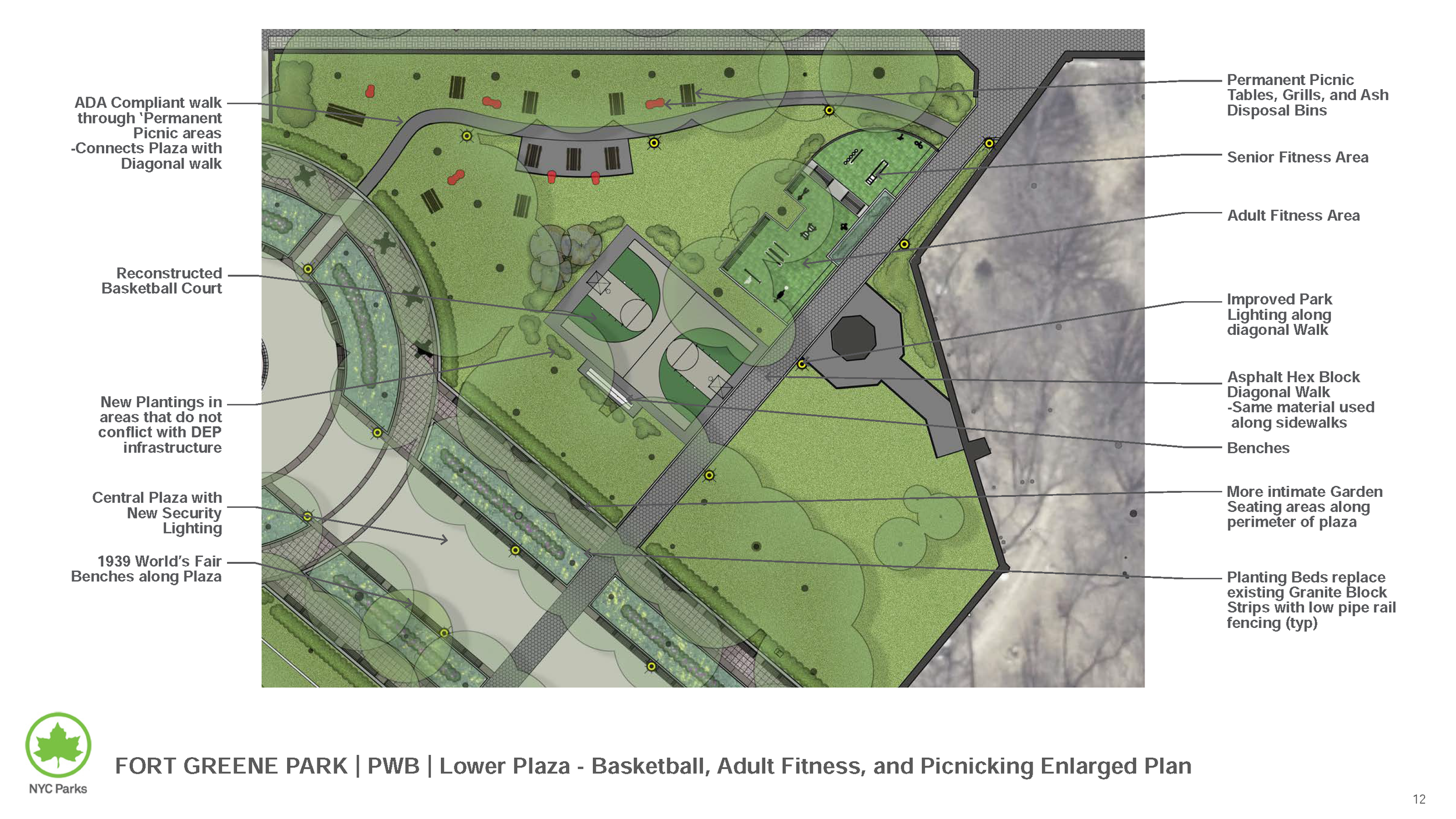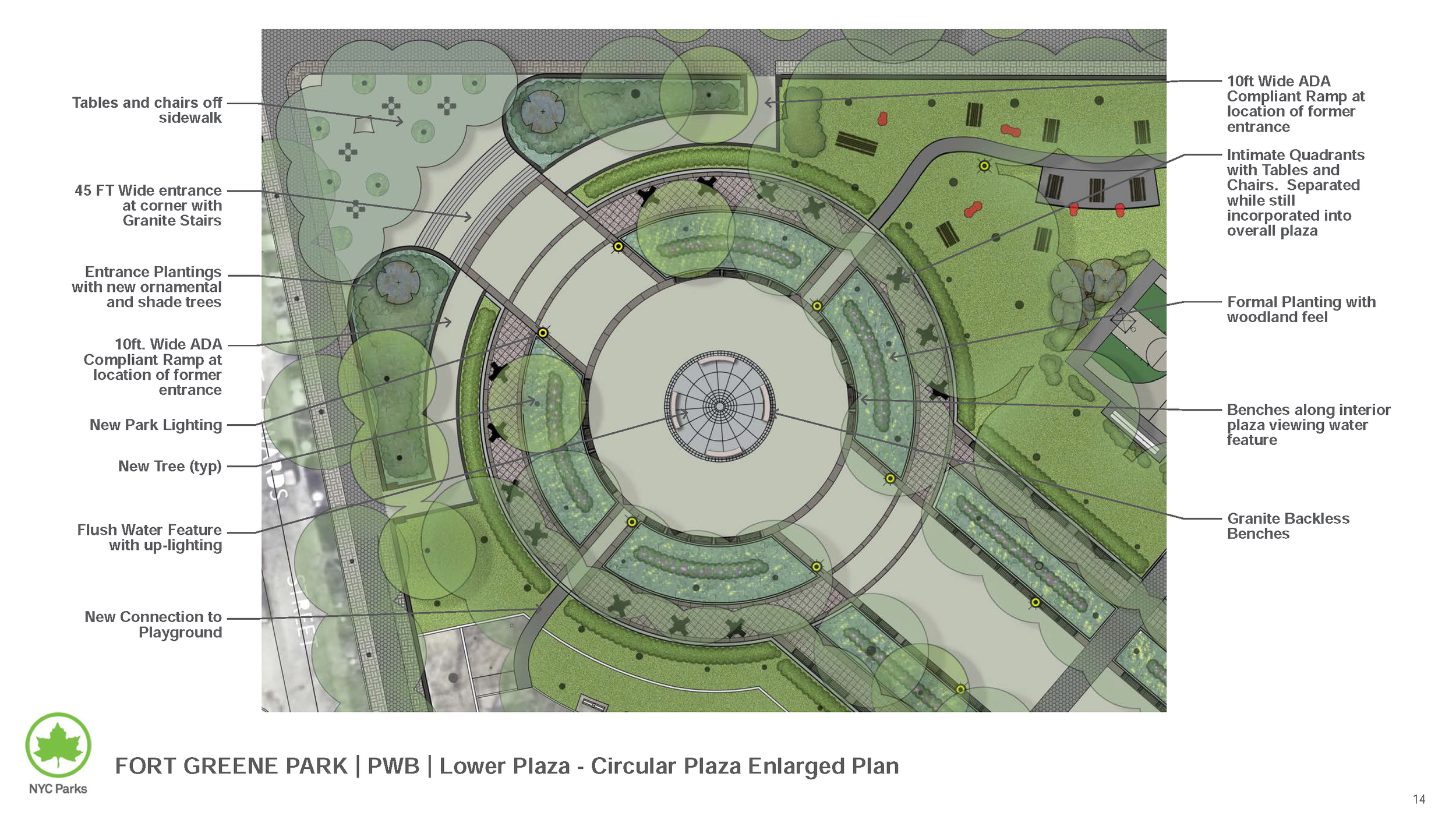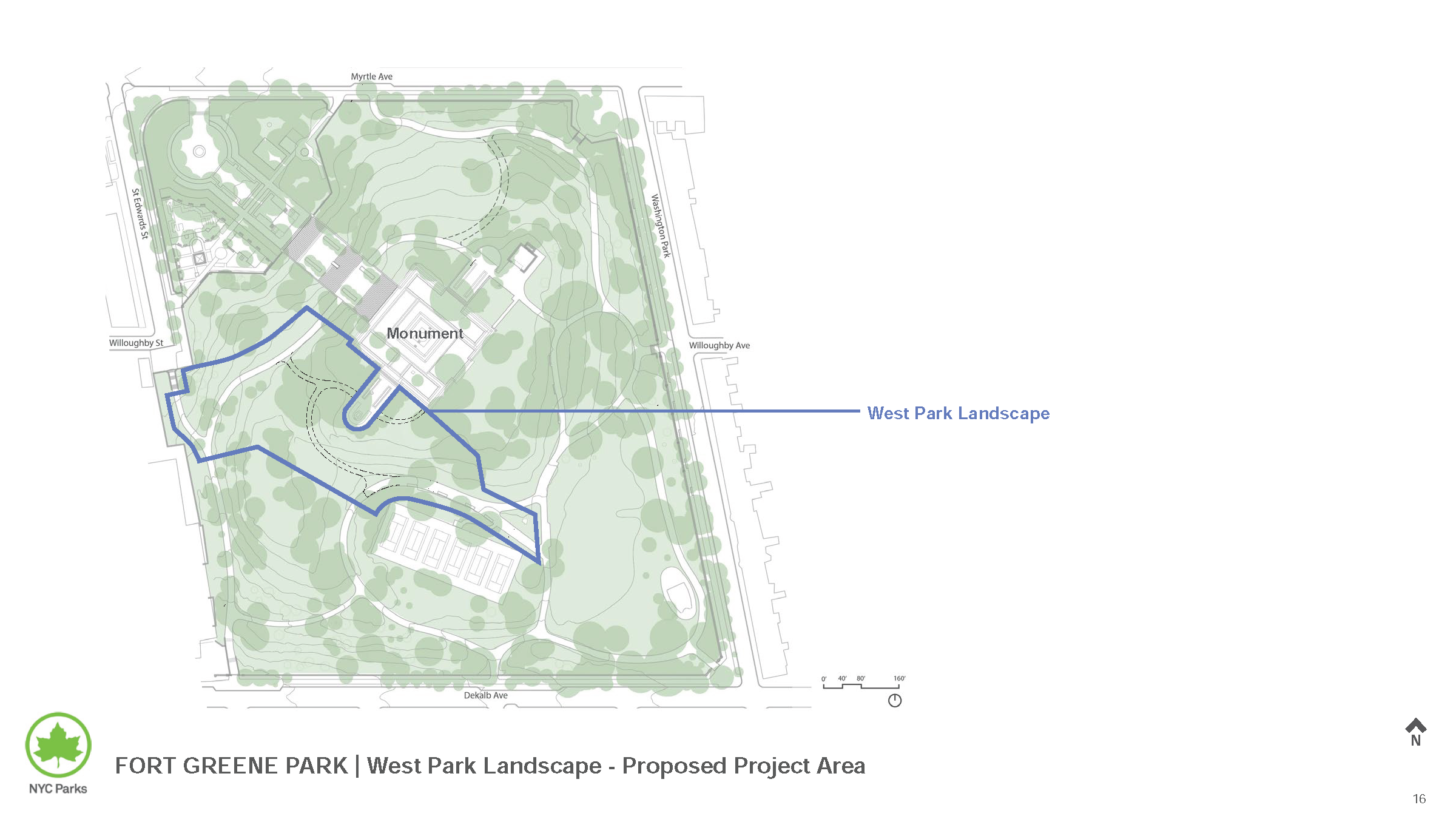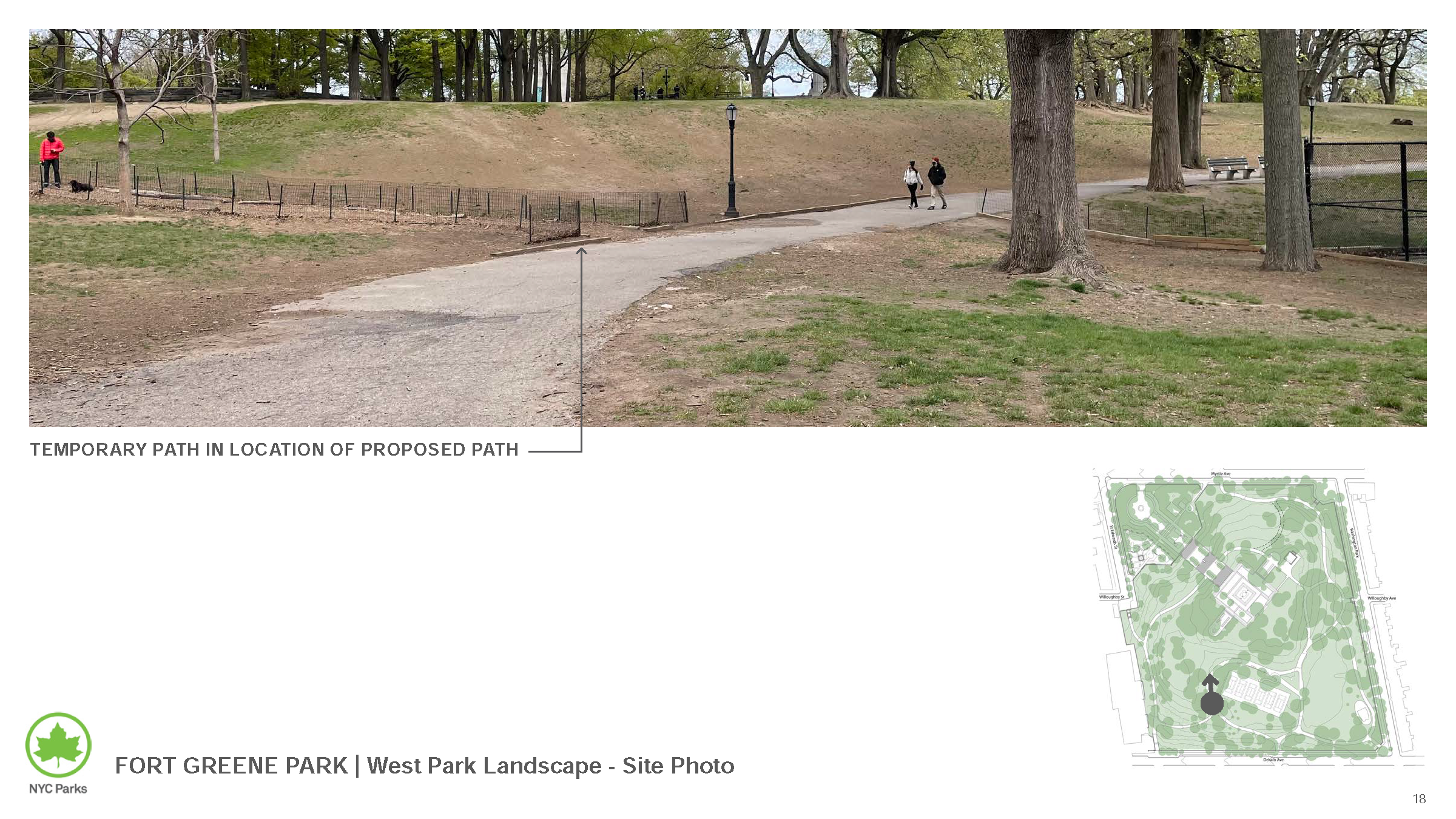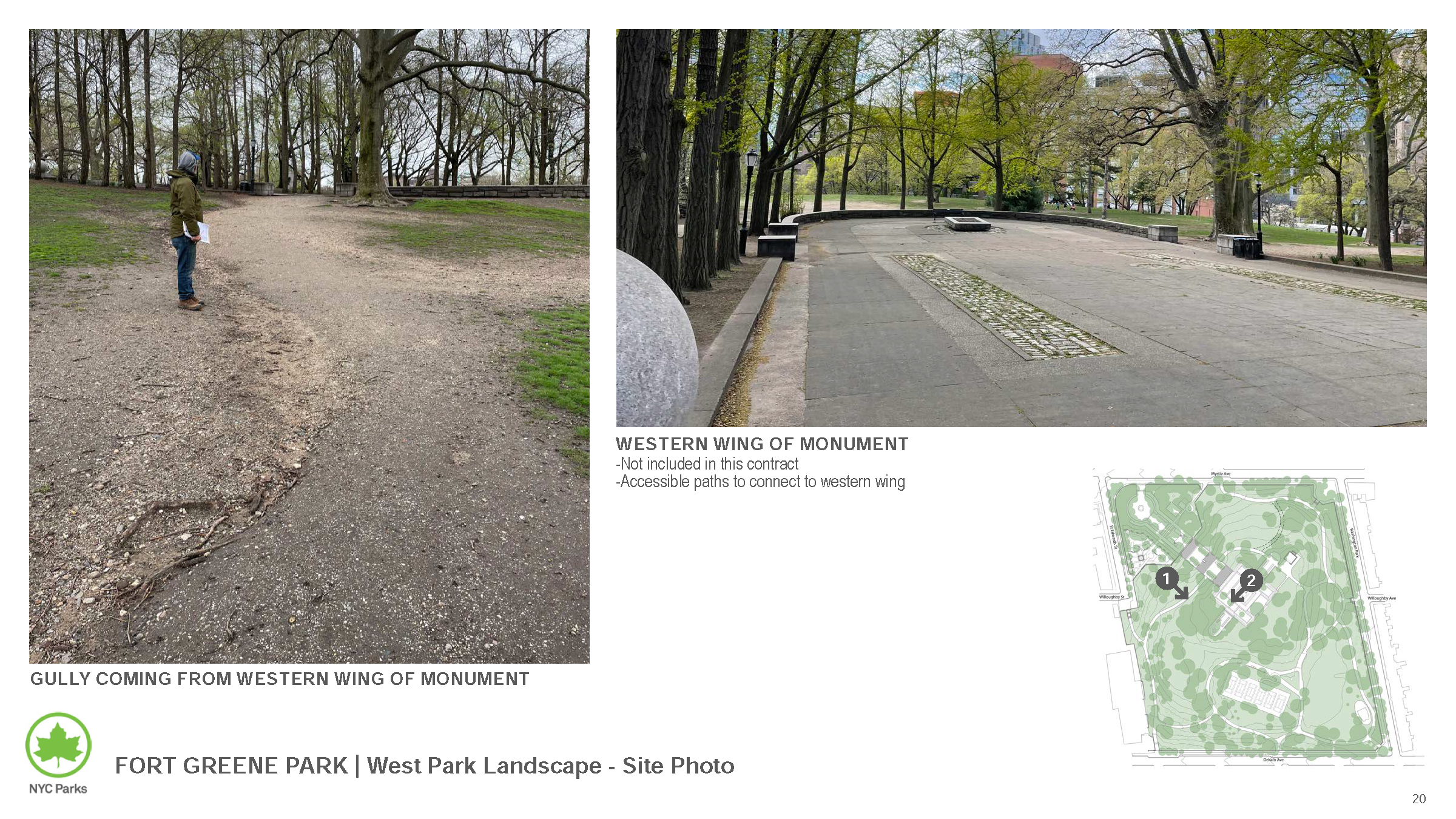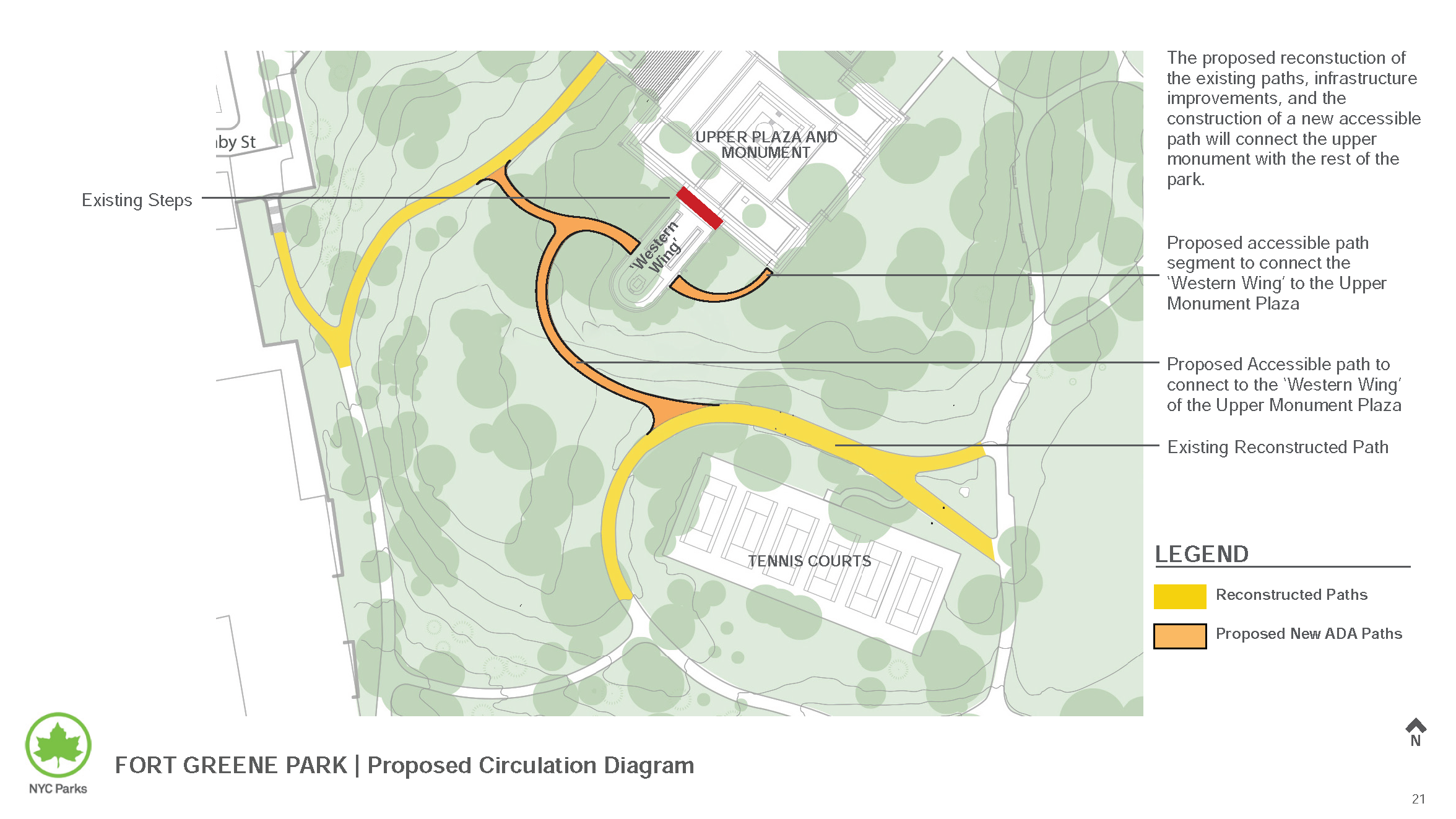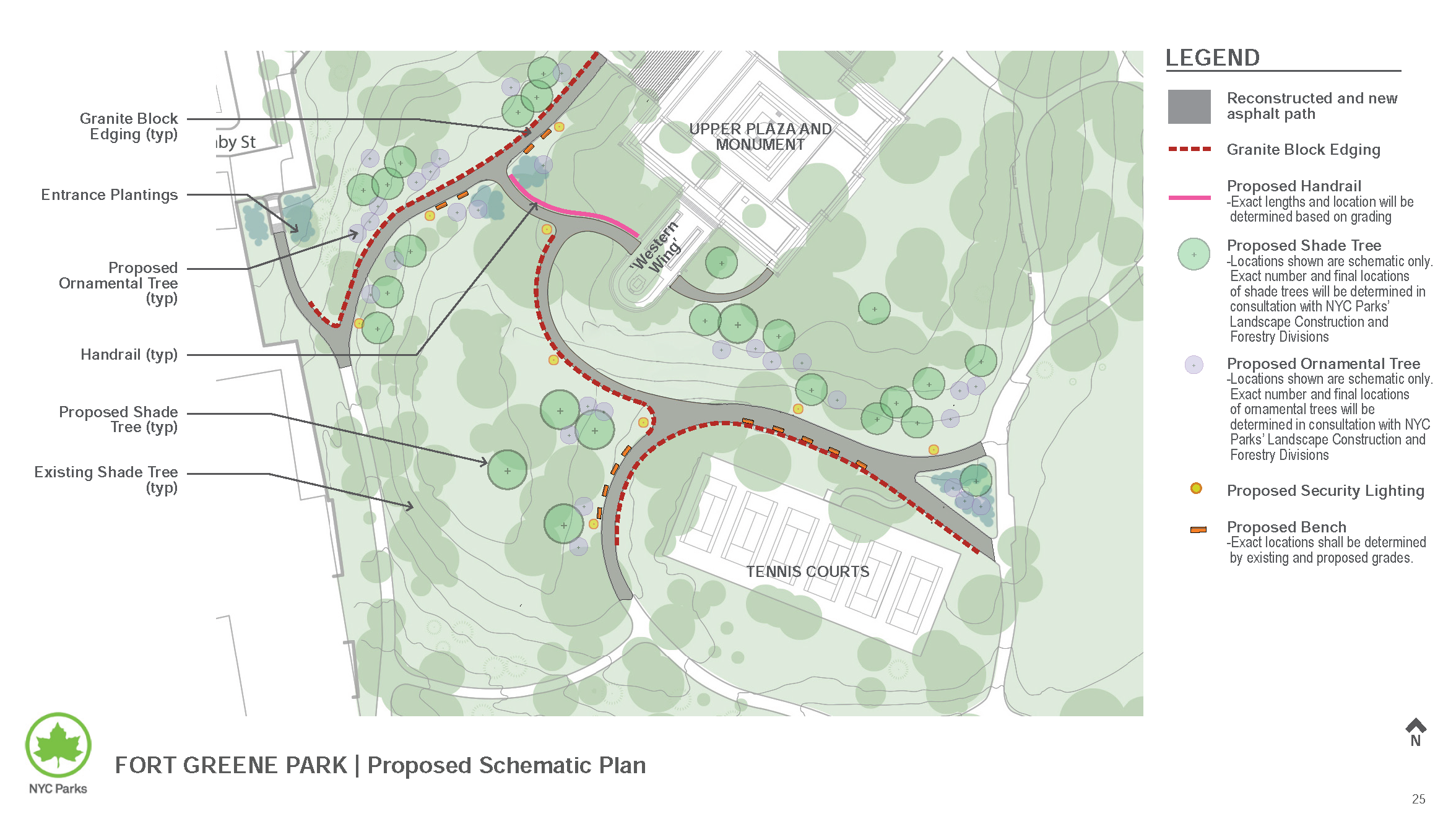Upcoming Capital Work in Fort Greene Park
We’re excited to share that park improvements breaking ground in the coming year will bring needed upgrades for the long-term sustainability and accessibility of the park. With new infrastructure, ADA-compliant entrances, attention to maintaining the natural diversity and health of the landscape, and greater recreational amenities, these improvements are a vital investment in the park’s environmental health and will ensure that the park remains accessible and serves the community for generations to come.
In 2023, an independent Environmental Assessment Statement confirmed that the planned work will provide numerous benefits to the park and surrounding neighborhood, while avoiding any significant adverse impacts.
If you’d like to learn more about the planned improvements, sign up for an informational tour or please contact us at info@fortgreenepark.org.
WHAT IS BEING PLANNED?
The scope of work for the capital project, called Fort Greene Park Entrances, Paths, Plaza and Infrastructure Reconstruction, encompasses a large area of the park. See the images of the scope below (more in-depth images of the project scope can be found at the bottom of this page).
The capital project will:
Improve park access and safety for all users by adding three ADA-compliant park entrances and fixing uneven sidewalks on the north side of the park that are difficult to navigate with wheelchairs, walkers, and canes. The project will also reconstruct the stairs on Dekalb by the hospital and install new lighting throughout the scope area.
Provide resources for the north side of the park, adjacent to Whitman and Ingersoll Houses, where nearly 8,000 people live. The north side of the park has not seen significant capital investment since the 1970s and, prior to that, the 1930s.
Upgrade highly trafficked recreational areas by reconstructing the basketball court, adding fitness equipment, preserving the barbeque area, adding grills and new picnic tables.
Lay the groundwork for the long-term environmental health of the park by adding native trees and removing invasive trees that prevent undergrowth and promote erosion, and by installing infrastructure systems for stormwater maintenance.
Despite the urgent need for these improvements, progress has been stalled for nearly a decade due to lawsuits by the “Friends” of Fort Greene Park. The delays associated with the lawsuits have not only wasted critical government resources—costs have ballooned to $24 million from an initial $10 million—but also deprived park users of ADA-compliant entrances, more park lighting, upgraded recreational areas, and a more sustainable park.
Now, the “Friends” of Fort Greene Park are presenting oral arguments in court on March 27, 2025, while soliciting more donations.
The Fort Greene Park Conservancy has partnered with NYC Parks as the primary steward of the park for nearly 25 years. Who are the “Friends”? What have they done? Please don’t donate to their delay tactics!
CALL TO ACTION: Instead of donating to the “Friends,” please share this information with your friends, family and neighbors so they learn about the improvements coming to the park.
MISINFORMATION & FACTS
Communications by a group called the Friends of Fort Greene Park and word of mouth has produced misinformation on the capital work.
MISINFORMATION #1: All the trees on the northwest corner of the park, including the rows of London Plane trees by the mounds, are being removed.
THE FACTS: The allée or rows of London Plane trees at the bottom of the stairs and the London Plane trees in the BBQ area will remain. The Honey Locust trees at the Northwest corner will be removed for design reasons, for stairs and to accommodate two new ADA ramps. New large caliper (diameter) trees will be planted in the area. The largest number of trees being removed are along the wall behind the BBQ area where trees grew in haphazardly from runoff/seed. Nearly half of the trees being removed are invasive Norway Maple trees.
MISINFORMATION #2: The northwest corner is going to be completely paved for regular commercial / market use.
THE FACTS: There are no plans by NYC Parks or the Conservancy for regular market use and commercialization of the northwest corner of the park. The Greenmarket will continue to be located along Washington Park and the Conservancy’s Artisans Bazaar will continue its footprint along Dekalb Ave. This northwest corner of the park already has a significant amount of paving from the 1930’s that is in horrible condition. The capital work will bring new gardens for this area of the park, including gardens that will protect the roots of the many London Plane trees.
MISINFORMATION #3: The 200+ new trees planted in the park will be small saplings and will suffer the same fate as street tree saplings in the neighborhood.
THE FACTS: The plans include trees 3-6” caliper (diameter) that will be capable of providing shade and canopy from the day they are planted. Trees planted in the park will benefit from the care of the onsite NYC Parks staff, the Forestry unit, and the resources of the Conservancy.
MISINFORMATION #4: The many Norway Maples being removed are not invasive trees and are good for the park.
THE FACTS: NYC Parks, New York State, and the U.S. Department of Agriculture all consider Norway Maples a non-native, invasive species that prevent undergrowth and promote erosion. New York State requires that any Norway Maples in nurseries be labeled "Invasive Species - Harmful to the Environment.” They were once considered a hardy urban tree planted for ornamental purposes but many now suffer from disease and structural weakness and their invasive tendencies have had negative impacts on forest composition in both urban and rural areas. In the park, you can see how areas around and under Norway Maples are unable to sustain understory plants and grass, contributing to erosion and other impacts. Over 200 new native trees will be planted and provide a better solution to long term challenges the park faces.
HOW SHOULD I DETERMINE MY OWN POSITION ON THE CAPITAL WORK?
We encourage everyone to learn more about the specifics by joining us on our tour or at our office hours, and reading the Environmental Assessment Statement for the project. Once you know more about what is being planned you will be able to assess the trade offs that are inherent in any project, and make your own conclusions on the capital work. See detailed images of the of the project scope below.
